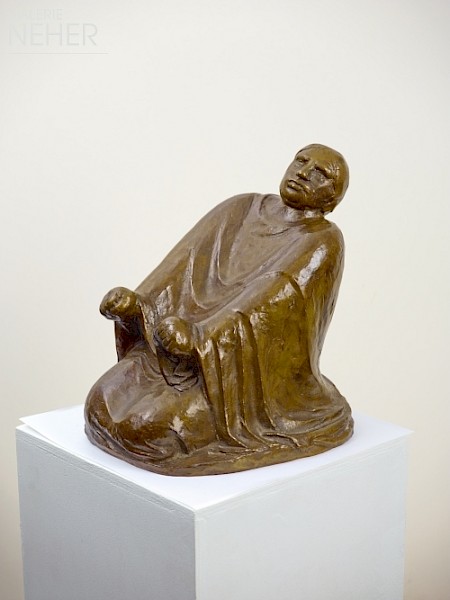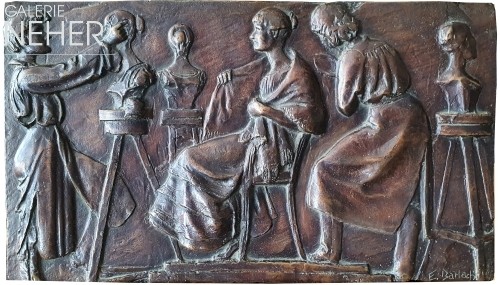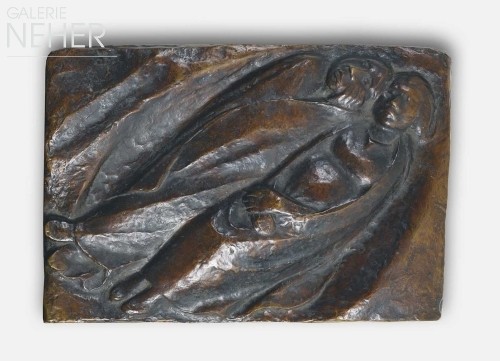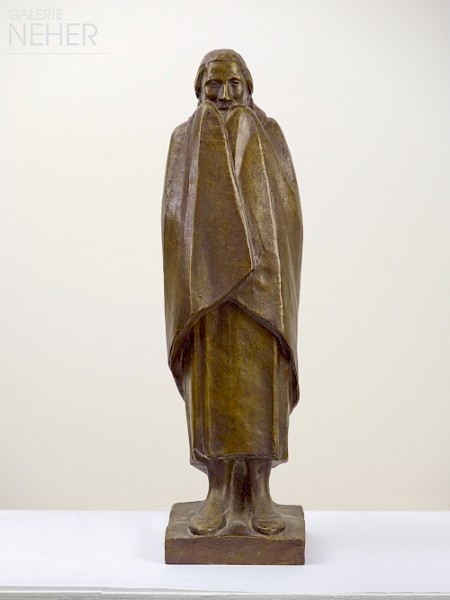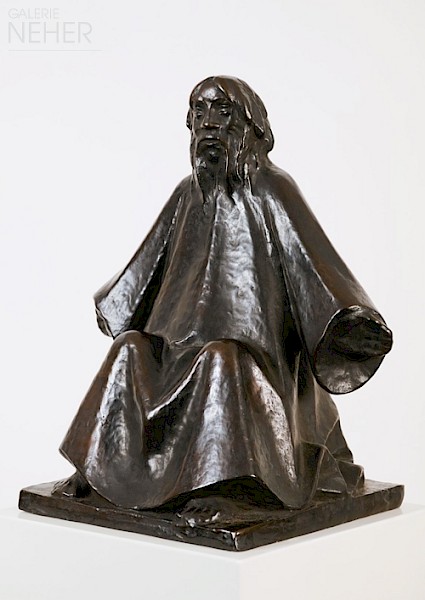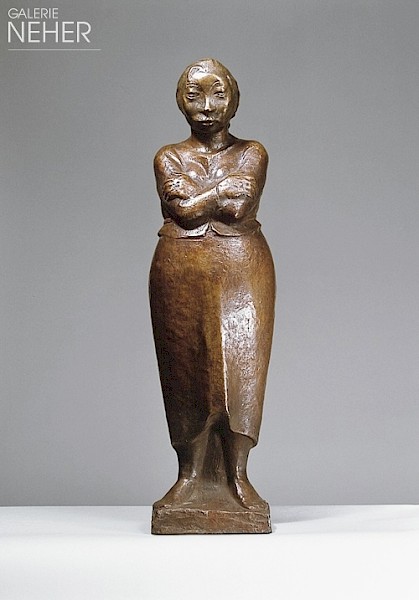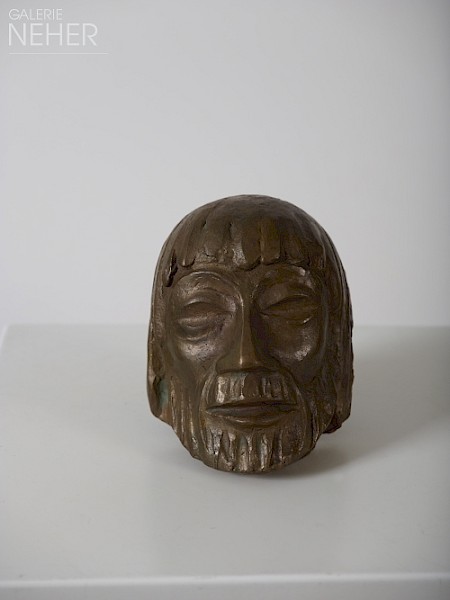About the work
We gaze at a figure frozen in a state of spiritual exaltation. He is visibly immersed in an internal dialogue over something unsaid, as yet indeterminate; contemplating, searching for a reply, emotionally blocked and transfixed to the spot. Resonating in its earthbound heaviness are Barlach's own experiences gained on his still recent trip to Russia to visit his brother Hans (in 1906).The tension so patently residing in this figure derives from two sources: We are witness to an ostentatious interplay between taut physical tension and the wave–like, soft undulations of the fabric which in their intentionally and conspicuously tranquil manifestation underline the contrast to the inner turmoil of the kneeling person.
The textures are consciously – and convincingly – applied as an element of verisimilitude within the mental turmoil.All that would remain without them, would be merely the optical presence of a quasi shock–induced stasis, a figure petrified in its mundane one–dimensionality. As it is, we are confronted with an adult man of corpulent stature who despite his apparent immobility, is in a state of emotional agitation. By virtue of the forceful gestures, above all the hands, the multivalent complexity of his obviously disparate mental state manifests itself.
The subtitle of the work listed in the catalogue raisonné of Barlach's sculptures "The Praying Man", broadens our interpretational trail into a negotiable path; the depiction of a figure kneeling on the floor is the credible visualisation of a discernibly strenuous (religious) conflict, a kind of isometric exercise: Together with the steeply inclined posture of the upper body and head, the two rigid fists stretched out before him generate a palpable physical tension from within; they also raise the question to which the folds of the garments provide an “answer” – although a solution has yet to be found. Commenting on the piece, Barlach stated: "My figures are located upon the centre ground between a 'where from' and a 'where to'." (abridged extract from the catalogue by Horst Müller)
Text authored and provided by Horst Müller
